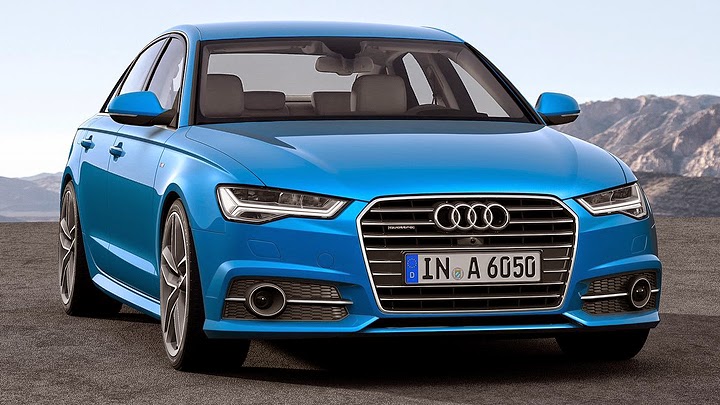
Keeping a car almost untouched through six or seven years is a strategy that, despite leading to think the opposite in a first moment, can bring very positive results. After all, the vehicle’s image becomes stronger this way. People who bought it in the first years know that the car will retain good value, while those who waited more will not be afraid of taking a car that can be rendered obsolete in a short time. Besides, since this means seeing the competitors become better and better, any automaker that wishes to work like this and remain competitive needs to develop a very good product. While German automakers have used this strategy mostly with luxury cars, the Japanese ones have always extended it to their mainstream options.
A6 gets prepared for 2015 with nips and tucks which can only be easily noticed by the most experienced Audi fans. After claiming its design “epitomizes precision and sporty elegance”, the company states “it was carefully honed as part of the model refresh, with changes made to the Singleframe grille, the headlights, air inlets, bumpers, side sills, rear lights and tailpipes”. Not to mention it also received the option of improving your headlights with either LED or Matrix LED technologies. The interior features new color and trim options, retouched electronic safety systems, and faster graphics processor for the infotainment system. But if you are still puzzled by the fact that you cannot seem to notice where did the car change, here are some pictures of the outgoing A6: front and rear.
When it comes to the sporty variation, the news are pretty much the same. The refreshed S6 comes with the typical set of visual accessories which aid to a very nice combination of sportiness and elegance. The huge wheels are there once again, along with revised front and rear bumpers (with bigger air intakes), a small rear spoiler and the signature two pairs of exhaust pipes. The cabin, in turn, repeats its exclusive combination of black leather and chrome inserts. On the other hand, the twin-turbocharged, 4.0L V8 had its power increased by 30 hp, in order to reach 450 hp. It is capable to accelerate from 0 to 100 kph in 4.4 seconds, but if when you are not in a hurry it is possible to drive 10.8 kilometers with one liter of gasoline. Doing that for around nine times will emit 214 g of CO2.
The conventional sedans had some engine improvements as well. There are three TFSI engines, with power ranging between 190 hp and 333 hp, and five TDI units, going from 150 to 326 hp. Audi states that all of them comply with Euro 6 standards and emit up to 22% less carbon dioxide. Among those, the 1.8 TFSI and the 2.0 TDI received the ultra label, which means they are A6’s most efficient options (17.5 kpl and 133 g/km, and 23.8 kpl and 109 g/km). As far as transmissions are concerned, Audi carried on with the plan of dropping its CVT: this sedan will work with an eight-speed tiptronic with diesel engines, and either a six-speed manual or the seven-speed S-Tronic with gasoline units. The Avant versions were presented with an exclusive article, which you can read clicking here.
Lançamento no Brasil (11/08/2015)
Para continuar a desfrutar do que é toda uma imunidade à crise econômica que assola o país, a Audi agora traz ao Brasil o A6 sedã renovado, que se junta às peruas Allroad e RS 6. O modelo será vendido nas variações já conhecidas Ambiente e Ambition, com pacotes de equipamentos fechados – o único opcional é a pintura metálica ou perolizada, por R$ 2.000. A primeira versão custa R$ 260.190 e usa o motor 2.0 TFSI, que gera 252 cv de potência e 37,7 kgfm de torque. Já a topo-de-linha custa R$ 335.190 e apresenta o 3.0 V6 TFSI, de 330 cv, e a tração integral quattro, com acionamento sob demanda. O câmbio é sempre o automatizado S-tronic, com dupla embreagem e sete marchas. Além dos pacotes de equipamentos muito generosos, há quatro cores para o acabamento interno e onze para a carroceria.






